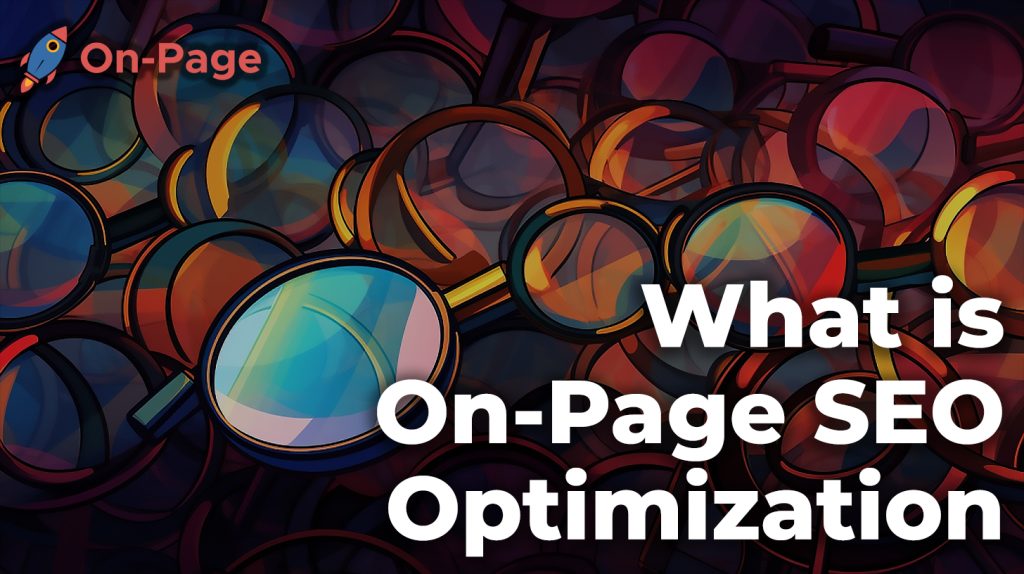
Imagine if your website could skyrocket to the top of search results, all thanks to one powerful approach. Does this sound too good to be true? Well, it’s not! Welcome to the world of On-Page SEO Optimization – the secret weapon you need to unlock your full potential in organic search rankings. In this guide, we will unveil how On-Page.ai, the top SEO tool of 2023, can give your site wings to soar above competitors and attract a flood of eager new visitors. Sit tight as we embark on this incredible journey that could transform your online presence forever!
On-page SEO optimization refers to the practice of optimizing individual pages on a website in order to rank higher and earn more relevant traffic from search engines. This involves optimizing content, meta tags, images, internal links, and other on-page elements to improve the search engine visibility and relevance of a webpage. Effective on-page optimization requires both analysis and regular monitoring to ensure that the process is geared towards achieving goals and addressing underlying issues. It is important to note that optimization measures that aren’t based on a solid, evidence-based plan can potentially harm keyword rankings or create a drop in conversion rates.
Understanding On-Page SEO
On-Page SEO optimization refers to the practices and techniques that are used to optimize a webpage in order to rank higher on search engines. It involves modifying the webpage’s content, layout, and structure to make it more attractive to search engines and users. In other words, it’s about making sure that your website is relevant and valuable to the user who is searching for information.
Imagine you were having a conversation with someone. The person would first introduce themselves with their name, and tell you what they do and what they are passionate about. They will also provide you some background info about their experience and what they can offer. Similarly, when creating a webpage, think about introducing it with relevant content such as page title, description, header text, etc. By doing this, you clearly communicate who you are, what you do, and why you’re relevant to the person visiting your site – just like in a conversation!
On-page SEO optimization is essential because it helps search engines understand what your content is all about. It makes your content easier to interpret and index by Google crawler bots. When crawlers are assessing pages for ranking purposes, optimizing your website using on-page SEO techniques ensures that your website conforms to these guidelines improving the chances of them being viewed favorably by bots. Consistently producing high-quality content in combination with good on-page SEO practices can contribute significantly towards achieving better rankings over time.
Some people believe that focusing on on-page optimization takes away from the quality of their content or that optimizing every page manually takes too much time and resources. However, this couldn’t be further from the truth. Opting for automated tools like On-Page.ai allows users to streamline their efforts while still maintaining control over their pages’ relevance and metadata information.
- According to a study published by Ahrefs in 2020, on-page SEO factors such as keyword usage in title tags, H1 tags, and meta descriptions were found to have a positive correlation with higher search engine rankings.
- Research conducted by Backlinko in 2020 revealed that the average Google first page result contains 1,447 words, highlighting the importance of comprehensive content in on-page SEO optimization.
- In a Moz study from 2019, it was found that optimizing URL structure – including shorter URLs and using keywords within them – can help improve a website’s search engine visibility by up to 25%.
Now that we better understand what on-page SEO optimization actually does, let’s take a deeper look at what kind of impact it has on ranking in search engines.
Impact on Search Results
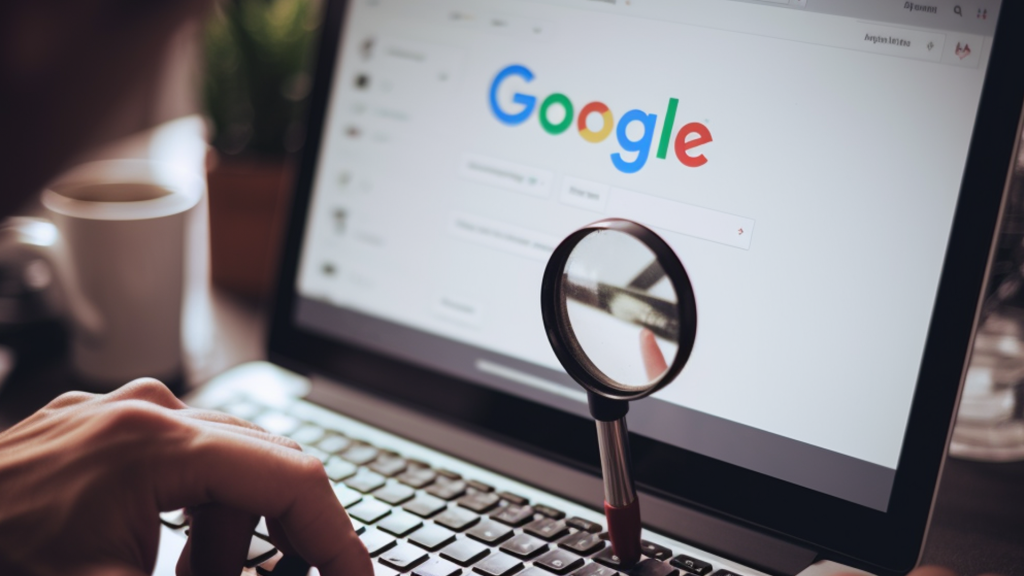
Your website ranking on search engine results pages (SERP) is directly impacted by the On-page optimization process. The better you optimize your website for your user, the higher you’ll rank. By following best practices like having well-written content, using headings appropriately alongside high-quality images and videos, optimizing page speed and mobile-friendliness, and creating engaging meta descriptions, users can expect to achieve higher rankings.
According to Moz, websites that rank high on Google search pages have better engagement rates from their visitors. This means that traffic from highly optimized webpages is typically more valuable because users who visit your site are already interested in what you have to offer before they even clicked through.
Like being at an auction where there are limited products available – to get what you want when there are limited resources nearby, paying attention to little details such as page load speed might give you an edge over competitors as it will make you more accessible and attractive towards the visitors searching for information.
Let’s say you’re on Google looking for information about cloud computing services. You type in “cloud computing services” and hit enter. In less than a second (usually), Google returns hundreds of different results with the most relevant ones appearing at the top of the list. Now imagine if one of the first few links was slow to load or provided irrelevant content – chances are that link would be less likely to get a visitor click-through. With a systematic focus on On-page optimization, website owners can effectively avoid such outcomes.
Some people argue that focusing too much on On-page optimization techniques leads to over-optimizing websites which could hinder the overall user experience, but this argument is not true – optimizing for your users should never be at odds with optimizing for search engines. In fact, search engines like Google and Bing each have said explicitly that focusing on good quality content that reads naturally is the best optimization practice contributors can pursue.
Now that we’ve reviewed the impact of On-Page SEO on SERP, let’s move to possible optimization practices regarding key factors like content relevance, metadata information, and keywords.
Key On-Page SEO Factors
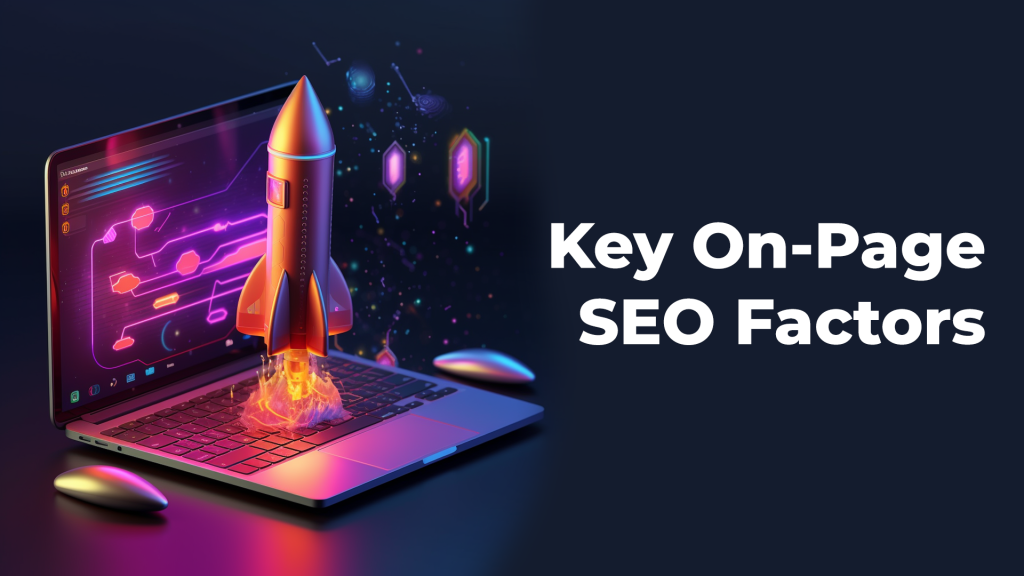
The key to a successful on-page SEO strategy is to optimize your website in a way that makes it as easy as possible for search engines to understand what your site and pages are all about. Here are some of the most important on-page SEO factors you should be focusing on:
Title Tags and Meta Descriptions: Title tags and meta descriptions are HTML elements that give search engines an overview of what a particular web page is about. They appear in the search results and give users an idea of what they can expect to find on your page. To make your title tags and meta descriptions more effective, you should include your primary target keywords, make them compelling and attention-grabbing, and write them in a way that encourages users to click through to your site.
URLs: Search engines use URLs to understand the context of a page. That’s why you want to make sure your URLs are short, clear, and descriptive. Avoid using long strings of numbers, special characters, or irrelevant words in your URLs – these kinds of URL structures make it harder for search engines to understand what your pages are all about.
Content Quality: When it comes to on-page SEO, content is king. All the technical optimization in the world won’t help if your content isn’t high-quality and relevant to your target audience. Make sure your content is well-written, engaging, informative, and includes other multimedia (like images or videos) where relevant.
Header Tags: Header tags (H1 through H6) help break up content into easily navigable sections that also help search engines understand the structure of the page. Think of header tags like chapters in a book: they help readers (and search engines) understand what each section of the page is about.
Relevance and Content Quality
Relevance and content quality are the backbones of any successful on-page SEO strategy. After all, if your content isn’t relevant to your target audience or high-quality, it doesn’t matter how well-optimized your site is – you won’t get great results. Here’s what you should keep in mind:
Keyword Optimization: Optimizing your pages for specific keywords is an important part of on-page SEO, but you don’t want to go overboard. Make sure your primary target keyword is included in your page title, URL, header tags, meta description, and throughout the body of your content (where it makes sense), but avoid overusing it (a practice known as “keyword stuffing”) which can actually hurt your rankings.
Content-Length: Studies have shown that longer-form content (think 2,000+ words) tends to perform better in search engines than shorter pieces. This is because longer-form content usually provides more depth and value to readers, so search engines tend to see it as more authoritative and valuable.
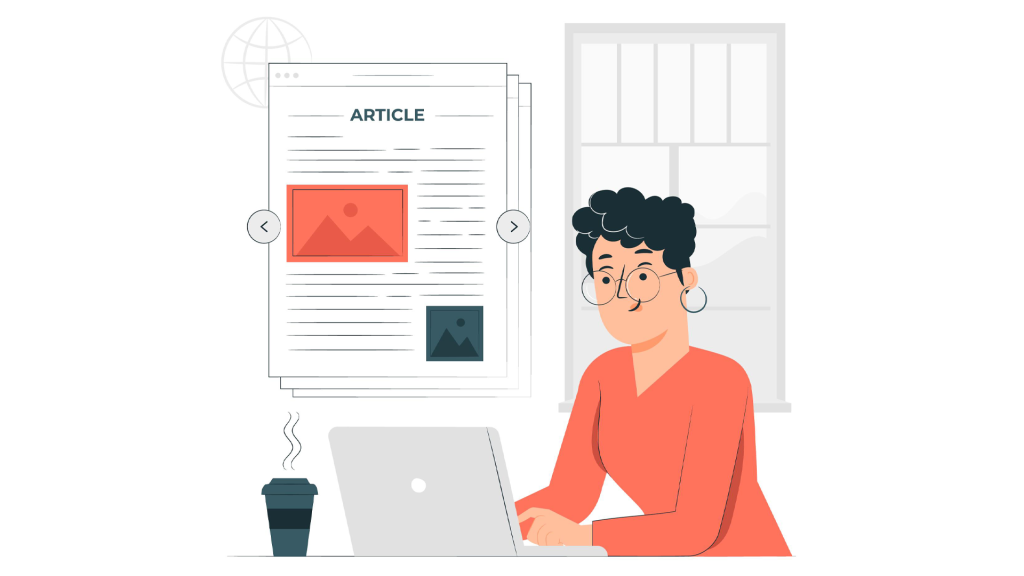
User Intent: When you’re creating content for on-page SEO purposes, it’s important to think about user intent. That means understanding what users are searching for when they look for content related to your industry or niche. By focusing on creating content that answers those user questions, rather than just blindly optimizing for keywords, you’ll be able to create a more effective and engaging website.
Visuals: Whether it’s images or videos, adding visual elements can help break up long blocks of text and make your content more engaging for users. But visuals aren’t just helpful for human readers – search engines also take them into account when ranking pages.
On-page SEO requires a combination of technical optimization best practices and high-quality, user-focused content creation strategies. By incorporating the key on-page SEO factors we’ve outlined above, you’ll be well on your way to increasing your website’s visibility and authority in search engine rankings.
HTML Tags and Metadata
One essential aspect of On-page SEO is HTML tags and metadata. Among the various factors affecting page ranking, proper utilization of HTML tags and metadata can make a significant difference in improving your page’s visibility on search engines. Understanding how these tags work will help you optimize your pages effectively.
A good example of how HTML tags affect rankings is the header tag (H1). The H1 tag is like a page title; it’s the first thing visitors see when they land on your web page, and it helps search engines determine what your page is about. Proper use of H1 headings makes it easier for search engines to understand your content and its relevance to users’ queries. If you incorporate a keyword within this tag that is relevant to the content, this will aid Google in understanding what user intent is behind the article.
Another important factor for improving search rankings is metadata. Metadata provides information to search engines through code snippets in the head section of the page that explain what’s on the page with structured data markups also providing context around users’ questions. This provides an opportunity to tell Google about what your business does, who you are, where you are located, and how you can serve users’ needs better than competitors. It’s critical to choose proper categories and subcategories for your website that align with your keywords.
Some site owners only focus on optimizing meta titles and descriptions but overlook other metadata such as Open Graph tags (OG) which enable images or videos to appear alongside links when shared on social media platforms such as Facebook or Twitter. OG tags allow phones to preview content properly in message previews, leading people before they actually click on the link itself. By not utilizing OG tagging correctly, many businesses miss out on potential traffic from social media platforms.
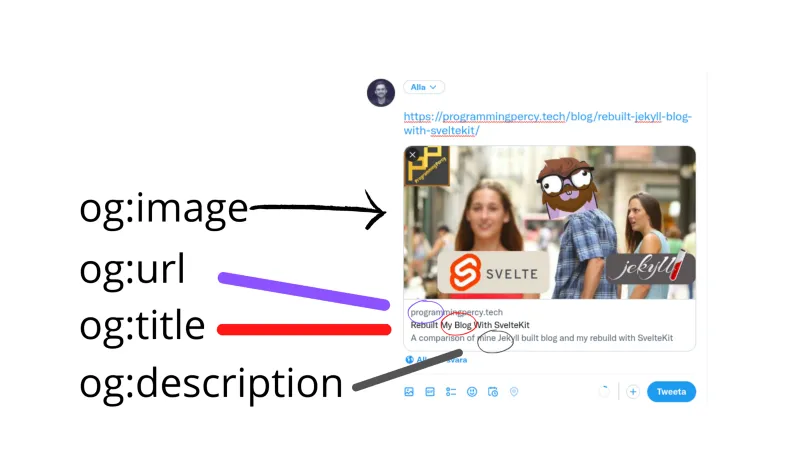
Just like baking a cake requires using the right ingredients in the correct quantities, optimizing web pages involves incorporating appropriate HTML tags and metadata. Properly using these tags is like having all the ingredients put together accurately to create a delicious cake that people want to try.
Now that you understand how critical proper utilization of HTML tags and metadata is for your page ranking, let’s explore various optimization techniques you can implement to boost your on-page SEO.
Optimization Techniques
Optimization techniques involve tactics and strategies used on websites to improve their visibility and ranking on search results pages. These techniques range from simple keyword research practices to complex website structuring processes that ensure maximum search engine crawling and indexing efficiency.
One way to optimize content is to use Latent Semantic Indexing (LSI) keywords. LSI keywords are related phrases or words that have similar meanings as your primary keyword. This helps search engines understand the relationship between all the words on a page and identify whether they are relevant to a user’s query.
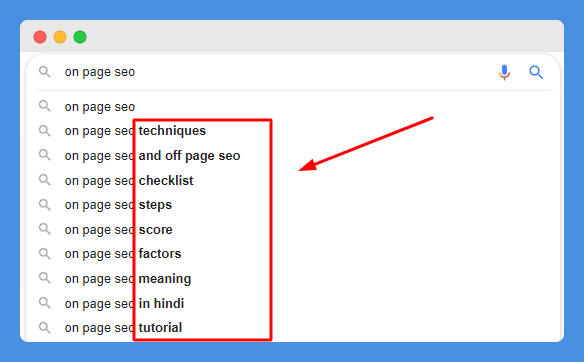
Another vital optimization technique is mobile optimization. Smartphone usage continues to climb, making it essential for businesses to ensure their website works seamlessly across both desktop and mobile devices – including phones, tablets, iPads, and more. Google rewards sites that offer personalized experiences for each device size – which includes enabling titles, images, content blocks, and advertising placements all configured specifically for each possible device type.
However, while there are several ways to optimize content effectively, not all practices provide equal value when it comes to improving rankings. The overuse of keywords throughout an article can lead to keyword stuffing penalties which hurt blogs attempting this strategy instead of helping them rank higher on SERPs. It is important that site owners do thorough research on SEO best practices beforehand.
Imagine SEO optimization as cleaning your house; there are various techniques you can employ depending on the time and goal priority. You can do small fixes and rearrangements every day, or you can have a day off entirely to deep clean in order to change the entire feel of your home.
Keyword Research and Placement
Keyword research is one of the cornerstones of any successful on-page SEO strategy. It’s crucial to understand which keywords your target audience is using to find solutions to their problems or the information they need. By optimizing your web page content for these keywords and phrases, you can increase your chances of ranking in Google’s SERPs and attract more organic traffic to your site.
During the initial stages of keyword research, it’s essential to think about the user intent behind each of these keywords and how well your web pages align with those intentions. Conducting research using a tool like On-Page.ai can help you identify high-value opportunities in highly relevant areas that other tools may overlook.

For example, suppose that a user types “best coffee shops New York City” into Google. In that case, their intention is generally to find high-quality coffee shops within New York City. Suppose you’re a local NYC business owner who owns a coffee shop and wants to improve their website’s ranking. In that case, it would be wise to optimize for that phrase during your website content creation.
One important mistake some businesses make during keyword research is focusing too much on short-tail keywords (one or two words), neglecting longer phrases known as “long-tail” keywords with lower search volume but less competition. These long-tail keywords are critical in attracting highly targeted traffic to your website and generating leads with a higher conversion rate.
Furthermore, implementing proper keyword placement across your website content is just as vital as selecting the right terms. Placing related terms correctly within tag titles or creating meaningful meta descriptions can influence click-through rates from search results. Organizing subheads or incorporating impactful visuals also showcases relevance for users who want useful information fast.
Users want clear communication between themselves and major companies; subtle detailing amounts to a better experience and increased search ranking within the SERPs. Research regularly to consistently know market trends or suggest different possible courses of action.
On-Page SEO Benefits and Results
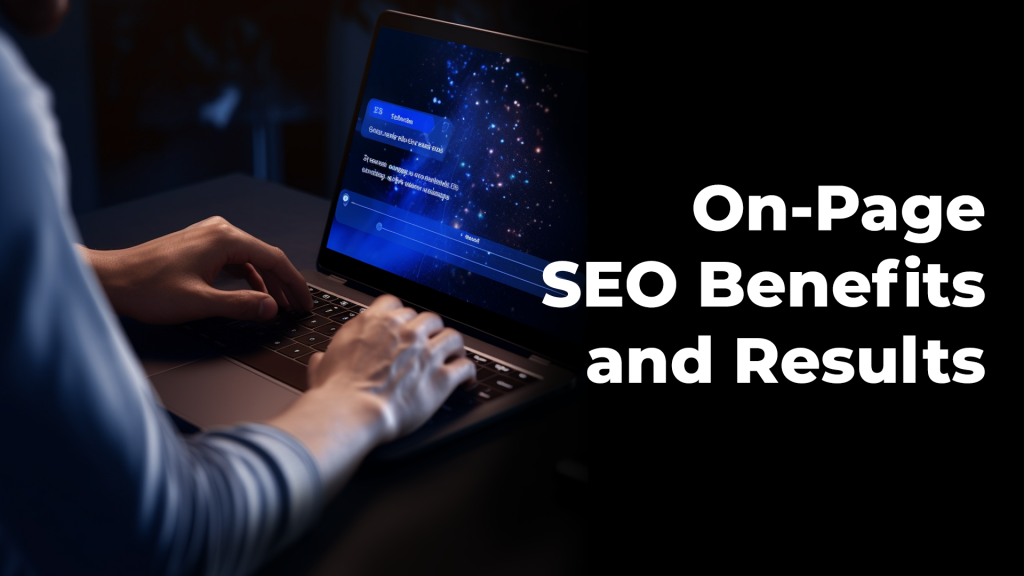
On-page SEO optimization offers many benefits to businesses of all sizes, from increasing site traffic to enhancing user experience to driving more leads and revenue. With the right approach, you’ll be able to build a website that works for both your target audience and search engines, creating a much-needed competitive edge in today’s crowded digital landscape.
For example, suppose you’re a small business operating in a highly competitive industry like e-commerce or real estate where even the slightest difference in rankings can have a considerable impact on lead generation and sales revenues. In that case, proper on-page optimization can be the deciding factor between success and failure.
By improving your website’s overall relevance and quality score, it’s easier for users and search engines alike to understand what your pages are about and their context within your site’s structure. At its core, on-page optimization is about helping Google use its extensive algorithm capabilities to identify how relevant your content is compared with other competing websites – essentially using your onsite relevancy as an index to rank against others.
It is similar to compiling all possible intelligence into one comprehensive index of useful information, leaving no stone unturned through cleverly disguised meta titles or image descriptions that print messages into the code. Every part needs to work together seamlessly so that search engines can determine which sites should rank higher depending on relevance quickly.
By optimizing your content for various long-tail keywords, implementing impactful visuals, using descriptive page labels, and creating valuable blog content that captures visitor attention (and engagement) – you’ll be able to build a website that meets both your target audience and search engine requirements, resulting in greater visibility in online searches.
On-page SEO optimization is crucial for businesses looking to stay competitive in the digital landscape, as it can increase site traffic, enhance user experience, and ultimately drive more leads and revenue. Proper on-page optimization using On-Page.ai involves improving website relevance and quality score so that search engines can better understand the content and context of your pages. This includes utilizing long-tail keywords, impactful visuals, descriptive page labels, and valuable blog content to meet both audience and search engine requirements effectively.
By implementing these strategies and maximizing the power of On-Page.ai, businesses can build websites that offer a much-needed competitive edge in highly competitive industries and improve their rankings in online searches.
FAQs
How does on-page SEO differ from off-page SEO?
On-page SEO refers to the optimization of various components within a website in order to improve its ranking in search engine results pages. In contrast, off-page SEO focuses on gaining external links and mentions to a website through tactics such as link building and social media marketing.
While Off-Page SEO is important for overall site visibility and can significantly impact a website’s performance, On-Page SEO plays a crucial role in determining how well individual pages rank for specific keywords. According to a recent study by Ahrefs, On-Page factors such as title tags, meta descriptions, and headers accounted for nearly 30% of a webpage’s ranking strength.
Additionally, Google continues to prioritize user experience, with factors such as page speed, mobile responsiveness, and content quality playing an increasingly important role in On-Page SEO. As such, neglecting On-Page optimization can result in decreased traffic and lower rankings.
In summary, while both On-Page and Off-Page SEO are necessary for effective digital marketing strategies, On-Page SEO remains an essential component in boosting website visibility and attracting targeted traffic.
How often should On-Page SEO be updated on a website?
On-Page SEO Optimization is not a one-time task but rather an ongoing process that never ends. Therefore, it’s essential to update your website’s On-Page SEO regularly to maintain or boost your rankings.
According to a study by Ahrefs, websites that update their content frequently tend to rank higher in search engines than the ones that don’t. This is because search engines want to serve their users with fresh and relevant content. Updating your content doesn’t necessarily mean rewriting everything from scratch; minor edits or adding new sections can also help.
Moreover, technology, algorithms, and user behavior are constantly evolving. What might have worked six months ago might not be as effective anymore. Therefore, it’s crucial to keep up with the latest trends and best practices in On-Page SEO optimization to stay ahead of the competition.
In conclusion, updating your website’s On-Page SEO should be a regular part of your digital marketing strategy. Whether it’s monthly, quarterly, or yearly, it depends on your business needs and goals. However, the key takeaway here is that you shouldn’t neglect it if you want to maintain or improve your website’s search engine performance.
Are there any best practices or guidelines for implementing On-Page SEO?
Yes, there are several best practices and guidelines that should be followed when implementing on-page SEO. These practices can improve your website’s search engine rankings and overall visibility.
Firstly, it is essential to conduct thorough keyword research to determine the most relevant and highest volume keywords for your content. This will help you effectively optimize your title tags, meta descriptions, header tags, and content to match user search queries.
Secondly, website speed is a critical factor in ranking higher in search results. According to Google, the average bounce rate increases by 32% as page load time goes from 1s to 3s. Therefore, it is vital to ensure your website loads quickly through caching, image optimization, and minimizing HTTP requests.
Thirdly, using unique and engaging content is highly recommended. Content with multimedia elements such as images and videos tend to perform better than purely text-based content. Moreover, using structured data markup can significantly increase your click-through rates by providing additional context about your website’s content.
Lastly, it is important to make sure that your website has a mobile-friendly design since more than half of all online searches are made via mobile devices. Also, utilizing schema markup can help spider bots understand what type of content they are crawling.
In conclusion, implementing on-page SEO best practices and guidelines can significantly boost your website’s rankings and performance. However, these are just a few recommendations; there are many other on-page SEO tactics you can use to enhance your site’s optimization.
What are some examples of On-Page SEO techniques?
On-Page SEO techniques are those strategies that help to optimize the content of a website. Here are some examples of On-Page SEO techniques:
1. Keywords Optimization: This is the process of using relevant keywords in your web page content, title tags, meta descriptions, and headers. According to a study by Backlinko, there is a positive correlation between keyword usage and higher rankings in Google search results.
2. Content Structure: Structuring your content with subheadings helps to make it easier for readers to scan through your page. According to HubSpot, pages with structured content receive 2x more traffic than pages without effective headings.
3. Internal Linking: Internal linking refers to links within your site’s pages. When done correctly, it helps search engine crawlers understand the relationship between your website’s pages. A study by Moz found that internal linking was one of the most important On-Page SEO factors.
4. Page Speed: Slow loading speeds can have a negative impact on your website’s ranking in search results. A study by Google showed that websites that load faster have higher conversion rates.
5. Image Optimization: Optimizing images on your webpages can also help improve rankings in search engines. By adding alt-tags and compressing the image size, you help search engines understand the context of your images and thus improve its accessibility.
By implementing these On-Page SEO techniques, you increase the likelihood of achieving better visibility in search engine results and capturing organic traffic – just as long as you focus on creating quality and unique content that aligns with user intent!
How does On-Page SEO impact website ranking on search engines?
On-Page SEO refers to the practices that can be implemented on a website’s pages in order to improve its rank in search engines. The effects of On-Page SEO are significant and can greatly impact a website’s ranking.
Search engines like Google use complex algorithms to determine which websites should be ranked higher for particular keywords. On-Page SEO optimization provides the necessary signals to search engines indicating that a particular website page is relevant, authoritative, and user-friendly.
When done right, there is no doubt about the positive impact of On-Page SEO on website rankings. A user-friendly website design, well-researched content with appropriate keyword placement, optimized title tags and meta descriptions, and efficient internal linking practices all contribute to improving a site’s overall search engine visibility.
In summary, disregarding On-Page SEO optimization with hopes to get your website ranked on top can lead you down a path of diminished online visibility. Implementing effective and relevant On-Page SEO practices using smart tools like On-Page.ai will give your website an edge over your competition and help increase traffic from targeted searches.




